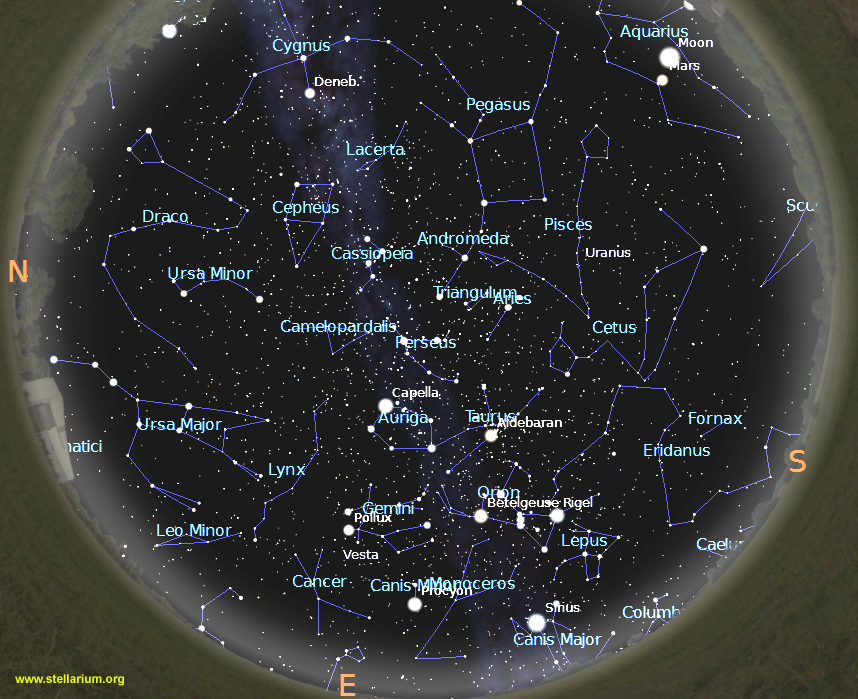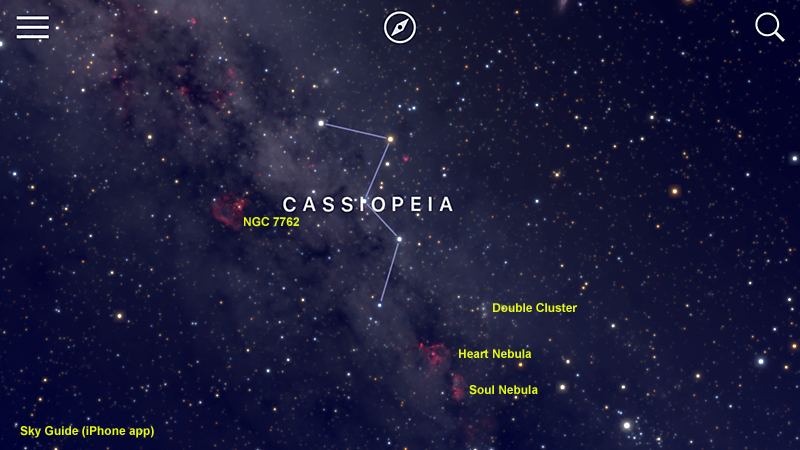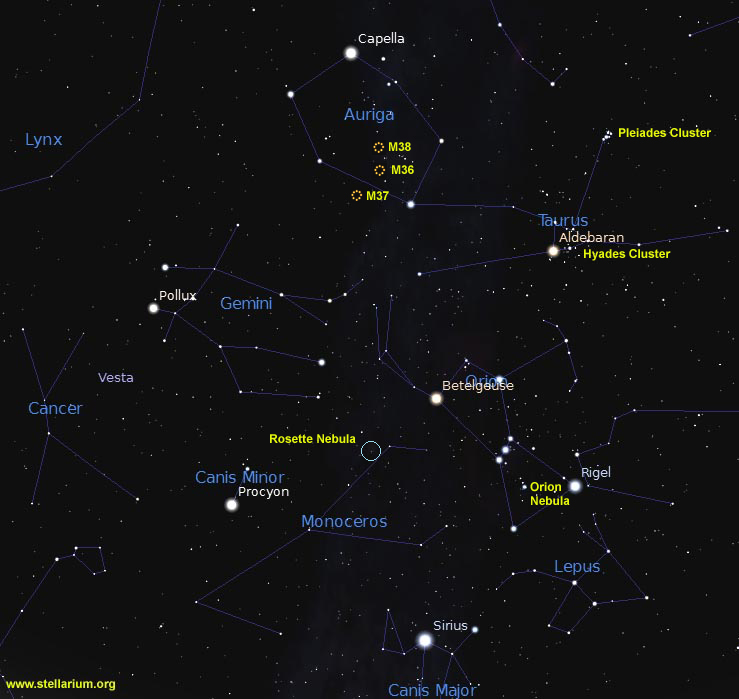The Winter Milky Way
Over the course of the year, we have the opportunity to enjoy our Milky Way Galaxy in varying degrees of elevation and richness. Lazy days of summer reward us with splendid views of the central portion of the galaxy to the south in Sagittarius and Scorpius. Fast forward to the present and we can still enjoy Cygnus the Swan sinking in the western sky. In fact, the “summer triangle” comprised of Altair, Vega and Deneb are still visible at 7 p.m. local time. From a dark location, follow the glow of millions of distant stars through Cepheus, Cassiopeia, Perseus, Auriga and down the left side of Orion through Monoceros. By the time you get down to this point, the band thins out but never the less is still visible.

Along the way, many binocular targets, as well as photographic challenges, await. Take for instance is the Double Cluster in Perseus. Catalogued as NGC 869 and NGC 884, they are roughly 7,000 light-years away and glimpsed with the unaided eye. Binoculars and a telescope with a wide-angle eyepiece show the brilliance of these side by side open star clusters that appear like diamonds on black velvet. To the astrophotographers, these twin objects are a piece of cake. However, a few degrees away are two large emission nebulas known as the Heart and Soul Nebulas catalogued as IC 1805 and IC 1848 respectively and are some 6,500 light-years away. A group photo is stunning.

Moving along the starry band, we stop at the constellation Auriga where we find a great trio of open clusters. They are M36, M37 and M38. Binoculars are required to find all three. Continuing we find ourselves face to face with Orion the Hunter. This iconic constellation is Orion Nebula is 1,500 light-years away and the birthplace of star creation where shells of gas and dust as slowly condensing and collapsing to one-day form suns. The Orion Nebula aka M42 is an extremely easy target to spot even seen from suburbs. Just look for the sword that hangs down from the three stars forming the belt.
A bit of a challenge might be the Flame Nebula. NGC 2024 is another stellar nursery and is located very close to the left-most star of the belt called Alnitak located 817 light-years away. The Flame is much farther back in space. Moving a little south from the Flame is the very elusive Horsehead Nebula. I had the chance to IC 434 (with great difficulty) through a 25-inch telescope. Needless to say, this is a photographic object. The Horsehead is located at the same distance as M42 and is also part of the Orion Molecular Cloud Complex.

Rounding out the tour is the Rosette Nebula located in Monoceros. Here is another emission nebula producing hundreds of stars. Estimated distance of 5,000 light-years away, the Rosette is huge. With binoculars, you can spot the young open cluster at the centre made up of three pairs of stars. From here you will need a wide-angle telescope to try to see the fainter portions of the Rosette. The entire complex measures close to four full moons by three moons in the sky. The red colour is only revealed by photographic means.

Venus is moving higher in the western sky and inching towards Mars. In dark sky conditions, Venus can cast a shadow on a sheet of white paper. As the planet moves closer to its greatest elongation from the Sun (47 degrees) on the 12th, it sports a beautiful half-lit phase much like the moon. Mars is getting fainter compared to the great show we had at the end of May. On Jan 1, Mars will be more than 250 million kilometres from Earth versus its 75 million kilometres close approach a few months ago. The planet Jupiter is a bit dimmer than Venus but never the less a brilliant object rising in the east around 1:30 a.m. local time.
The Quadrantids meteor shower will peak on the morning of the 4th. This is a very short-lived shower that lasts a few days, so its peak of seeing 50 to 100 meteors per hour does not last very long. The radiant can be found halfway between the end star of the Big Dipper and the constellation Bootes. The full Wolf Moon occurs on January 12 at 6:34 a.m. eastern. The new moon occurs on the 27th.
Until next month, clear skies everyone.
Twitter: @astroeducator
